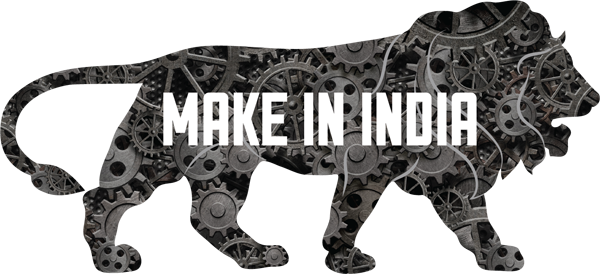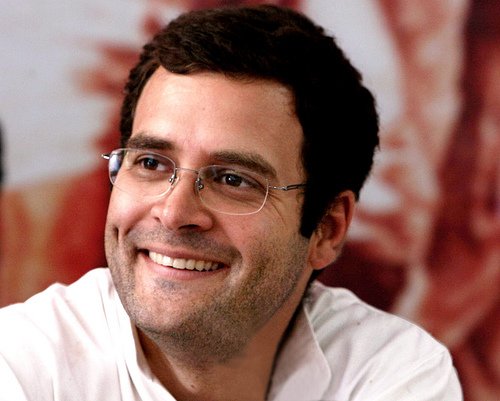Mrs. Lintott: Now. How do you define history Mr. Rudge?
Rudge: Can I speak freely, Miss? Without being hit?
Mrs. Lintott: I will protect you.
Rudge: How do I define history? It’s just one fuckin’ thing after another.
– Alan Bennett, The History Boys
Economists these days do not give much importance to economic history. As Cambridge University economist Ha-Joon Chang writes in Economics—The User’s Guide: “Many people consider economic history [emphasis in the original], or the history of how our economies have evolved, especially pointless. Do we really need to know what happened two, three centuries ago.”
Nevertheless, a good understanding of economic history is necessary to ensure that we don’t take things for granted. Take the case of economic growth. In the times that we live in we take rapid economic growth for granted. But for much of humankind that wasn’t the case. As best-selling author and economist Tim Harford put it in a column “Economic growth is a modern invention: 20th-century growth rates were far higher than those in the 19th century, and pre-1750 growth rates were almost imperceptible by modern standards.”
Chang makes this point in his book. Between 1000AD and 1500AD, per capita income, or the income per person, grew by 0.12% per year in Western Europe. What this means is that the average income in 1500 was only 82% higher than that in 1000. “To put it into perspective, this is a growth that China, growing at 11 per cent a year, experienced in just six years between 2002 and 2008. This means that, in terms of material progress, one year in China today is equivalent to eighty-three years in medieval Western Europe,” writes Chang.
Further, at 0.12% Western Europe was growing at a very fast pace in comparison to other parts of the world. Asia and Eastern Europe during the same period grew at 0.04% per year. Hence, by 1500 the per capital income in these parts of the world would have been 22% higher than that in 1000.
Things did not improve in the centuries to come. Between 1500 and 1820, the per capita income in Western Europe averaged at 0.14% per year, which wasn’t very different from 0.12% per year, earlier. Some countries like Great Britain and Netherlands which were busy building a global empire and had also got a central bank going, grew a little faster at 0.27% and 0.28% respectively. So by modern standards the world was in a depression between 1000AD and 1820AD.
Things improved over the next 50 years. Between 1820 and 1870, the per capita income for Western Europe grew by 1% per year, which was significantly higher than anything the world had seen earlier.
One reason for this turbo-charged growth was the start of the industrial revolution. In the years leading to 1820 many new production technologies were invented. “In the emergence of these new production technologies, a key driver was the desire to increase output in order to be able to sell more and thus make more profit,” writes Chang.
Along with this, the evolution of banks and the financial system also helped. “With the spread of market transactions, banks evolved to facilitate them. Emergence of investment projects requiring capital beyond the wealth of even the richest individuals prompted the invention of the corporation, or limited liability company, and thus the stock market,” writes Chang. And this helped enterprises raise the money required to start a business, something which is at the heart of capitalism.
After 1870, the production technologies kept improving. The economist Robert Gordon divides invention and discoveries into three eras. The second era came between 1870 and 1900 and according to him had the maximum impact on the economy in particular and the society in general.
As he writes in a research paper titled Is US Economic Growth Over? Faltering Innovation Confronts the Six Headwinds “Electric light and a workable internal combustion engine were invented in a three-month period in late 1879…The telephone, phonograph, and motion pictures were all invented in the 1880s. The benefits…included subsidiary and complementary inventions, from elevators, electric machinery and consumer appliances; to the motorcar, truck, and airplane; to highways, suburbs, and supermarkets; to sewers to carry the wastewater away,” writes Gordon.
Based on Gordon’s research paper, Martin Wolf wrote in the Financial Times: “Motor power replaced animal power, across the board, removing animal waste from the roads and revolutionising speed. Running water replaced the manual hauling of water and domestic waste. Oil and gas replaced the hauling of coal and wood. Electric lights replaced candles. Electric appliances revolutionised communications, entertainment and, above all, domestic labour. Society industrialised and urbanised. Life expectancy soared.”
In fact, Gordon makes an interesting observation regarding this increase in productivity by comparing motor power to a horse. As he writes: “Motor power replaced animal power. To maintain a horse every year cost approximately the same as buying a horse. Imagine today that for your $30,000 car you had to spend $30,000 every year on fuel and repairs. That’s an interesting measure of how much efficiency was gained from replacing the horses.”
And all these inventions drove economic growth. As Bill Bonner told me in an interview I did with him a few years back: “Trains were invented 200 years ago. Automobiles were invented 100 years ago. Aeroplanes came on the scene soon after. Electricity – fired by coal, oil…and later, atomic power – made a big change too. But all the major breakthroughs date back to a century or more. Even atomic power was pioneered a half century ago. Since then, improvements have been incremental…with diminishing rates of return from innovations.”
These game changing inventions are now a thing of the past. Harford explained this to me through a couple of brilliant examples when I interviewed him for The Economic Times a few years back. As he told me: “The 747 was a plane that was developed in the late 1960s. The expectation of aviation experts is that the Boeing 747 will still be flying in the 2030s and 2040s and that gives it a nearly 100 year life span for its design. That is pretty remarkable if you compare what was flying in 1930s, the propeller aeroplanes. In the 1920s they didn’t think that it was possible for planes to fly at over 200 miles an hour. There was this tremendous progress and then it seems to have slowed down.”
The same seems to be true for medicines. “Look at medicine, look at drugs, antibiotics. Tremendous progress was made in antibiotics after 1945. But since 1980 it really slowed down. We haven’t had any major classes of antibiotics and people started to worry about antibiotic resistance. They wouldn’t be worried about antibiotic resistance if we thought we could create new antibiotics at will,” Harford added.
So the basic point is that growth of economic productivity has petered out over the last few decades because game changing inventions are a thing of the past. These game changing inventions changed the Western countries (i.e. the US and Europe) and helped them rise at a much faster rate than rest of the world. But that might have very well been a fluke of history.
Nevertheless, what these game changing inventions did was that they led to the assumption that economic growth will continue forever. But will that turn out to be the case? As Gordon wrote in his research paper: “Economic growth has been regarded as a continuous process that will persist forever. But there was virtually no economic growth before 1750, suggesting that the rapid progress made over the past 250 years could well be a unique episode in human history rather than a guarantee of endless future advance at the same rate.”
And this might very well come out to be true. The core of Gordon’s argument is that modern inventions are less impressive than those that happened more than 100 years back. “Attention in the past decade has focused not on labor-saving innovation, but rather on a succession of entertainment and communication devices that do the same things as we could do before, but now in smaller and more convenient packages. The iPod replaced the CD Walkman; the smartphone replaced the garden-variety “dumb” cellphone with functions that in part replaced desktop and laptop computers; and the iPad provided further competition with traditional personal computers. These innovations were enthusiastically adopted, but they provided new opportunities for consumption on the job and in leisure hours rather than a continuation of the historical tradition of replacing human labor with machines,” writes Gordon.
And that isn’t happening anymore.
The column originally appeared on The Daily Reckoning on May 14, 2015




